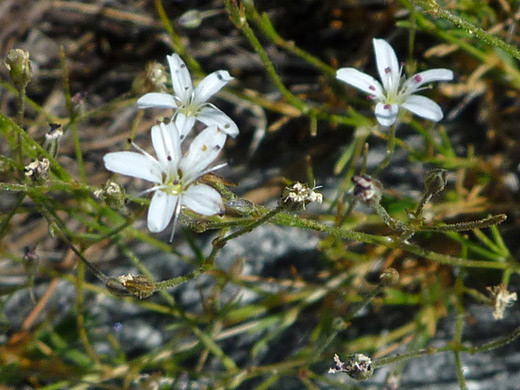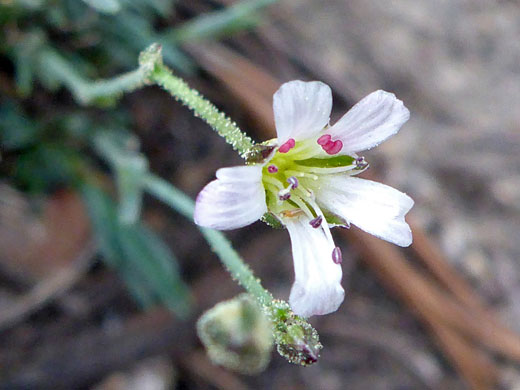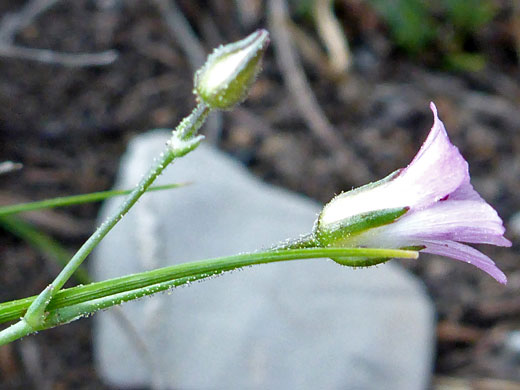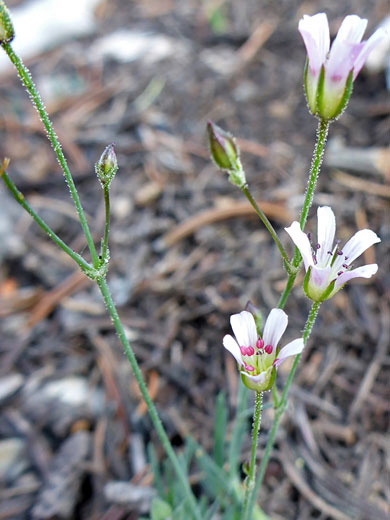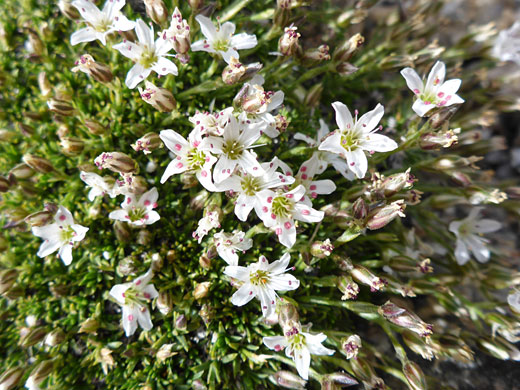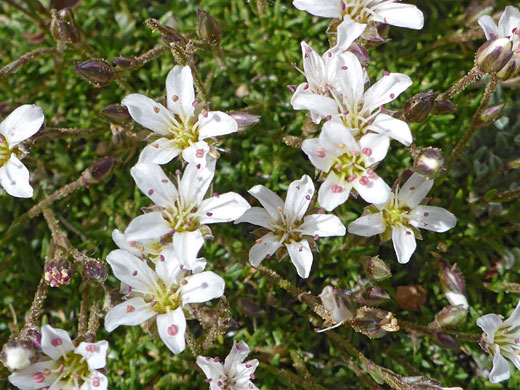Common name:
King's matted sandwort
Family:
Scientific name:
Eremogone kingii
Main flower color:
Range:
The Great Basin and adjoining states, eastwards to parts of the Rockies
Height:
Usually up to 8 inches
Habitat:
Mountain canyons, rocky hillsides; 6,900 to 13,200 feet
Leaves:
Linear, needle-like, up to 1 inch long, with pointed tips
Season:
June to September
Eremogone kingii is a high elevation species, found in most mountainous areas of the West, up to elevations of 13,000 feet or more. Like most such species, plants are low-growing, only around six inches high, and the leaves are small - needle like, forming tufts at the base and along the stems. Stems may be hairless or (more usually) covered by short, glandular hairs.
Flowers are produced in open, terminal clusters, with up to several dozen heads for plants inhabiting lower elevation regions but just one or two in the highest areas. Flowers are attached to the stem by pedicels around half an inch long. The five petals are white, around a quarter of an inch in length, while the flower center is yellowish, and contains ten white, purple- to brown-tipped stamens.
Varieties include var kingii of Nevada and Utah, which has lobed petal margins, and the more widespread var glabrescens, which has entire or irregularly notched petal margins.
Flowers are produced in open, terminal clusters, with up to several dozen heads for plants inhabiting lower elevation regions but just one or two in the highest areas. Flowers are attached to the stem by pedicels around half an inch long. The five petals are white, around a quarter of an inch in length, while the flower center is yellowish, and contains ten white, purple- to brown-tipped stamens.
Varieties include var kingii of Nevada and Utah, which has lobed petal margins, and the more widespread var glabrescens, which has entire or irregularly notched petal margins.
All Contents © Copyright The American Southwest | Comments and Questions | Contribute | Site Map
